WD SN750 SE 1TB Performance Testing
We test using both the default smaller test size as well as larger test sets on our benchmarks. This allows us to see the difference between lighter and heavier workloads.
CrystalDiskMark x64
CrystalDiskMark is used as a basic starting point for benchmarks as it is something commonly run by end-users as a sanity check.
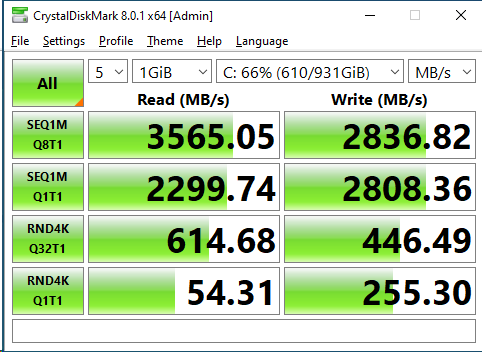
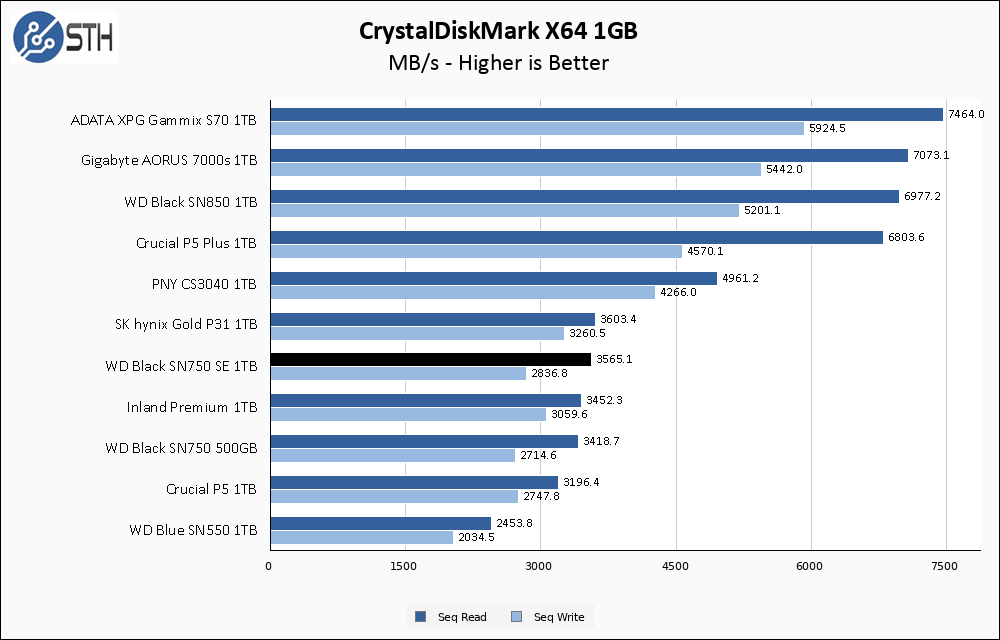
Right off the line the WD Black SN750 SE finds itself among the company of PCIe 3.0 drives. The SN750 SE finds itself among the upper echelon of PCIe 3.0 drives. It does live up to its rated performance specs at least.
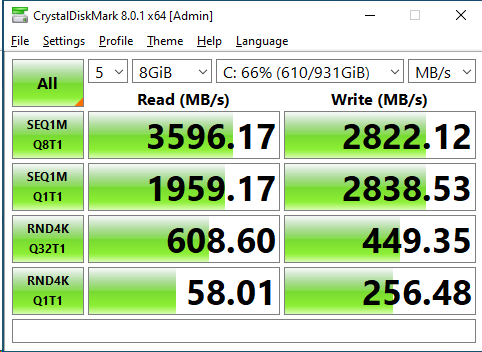
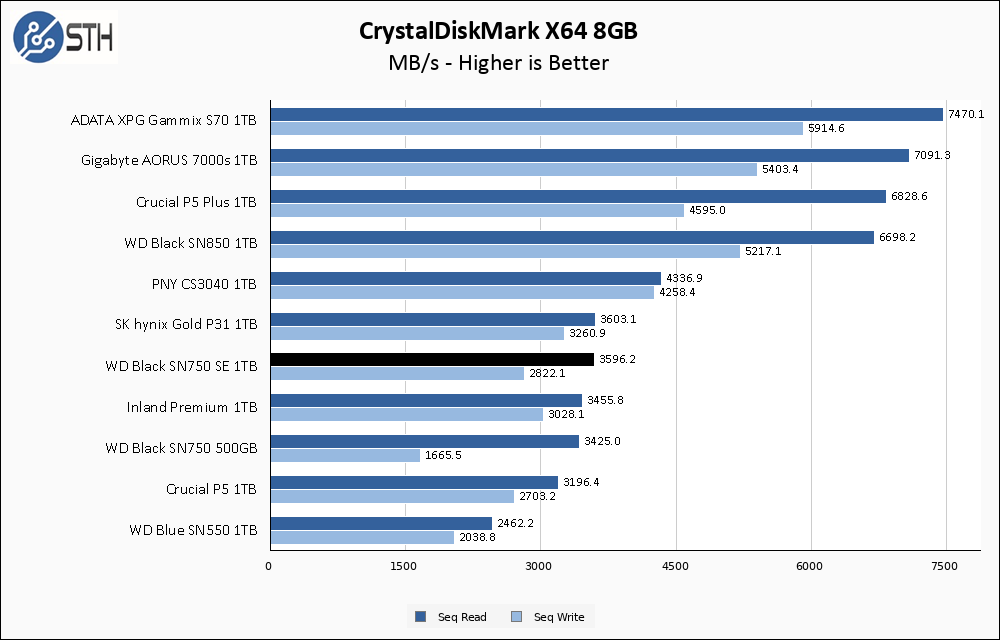
Performance drop on the larger CrystalDiskMark test is nil, which is good to see especially on a DRAM-less drive.
ATTO Disk Benchmark
The ATTO Disk Benchmark has been a staple of drive sequential performance testing for years. ATTO was tested at both 256MB and 8GB file sizes.
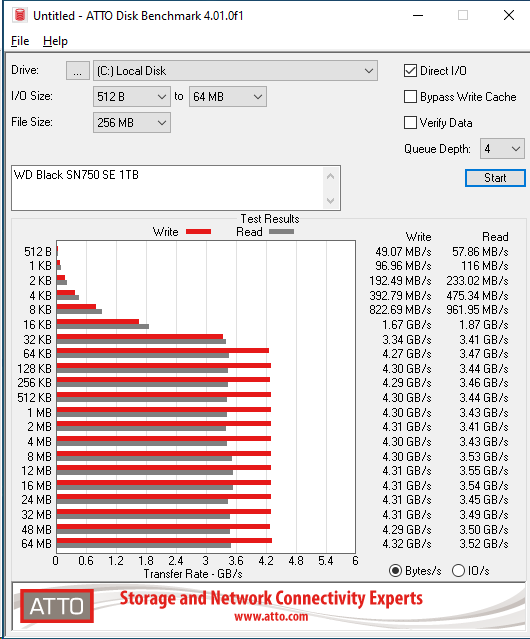
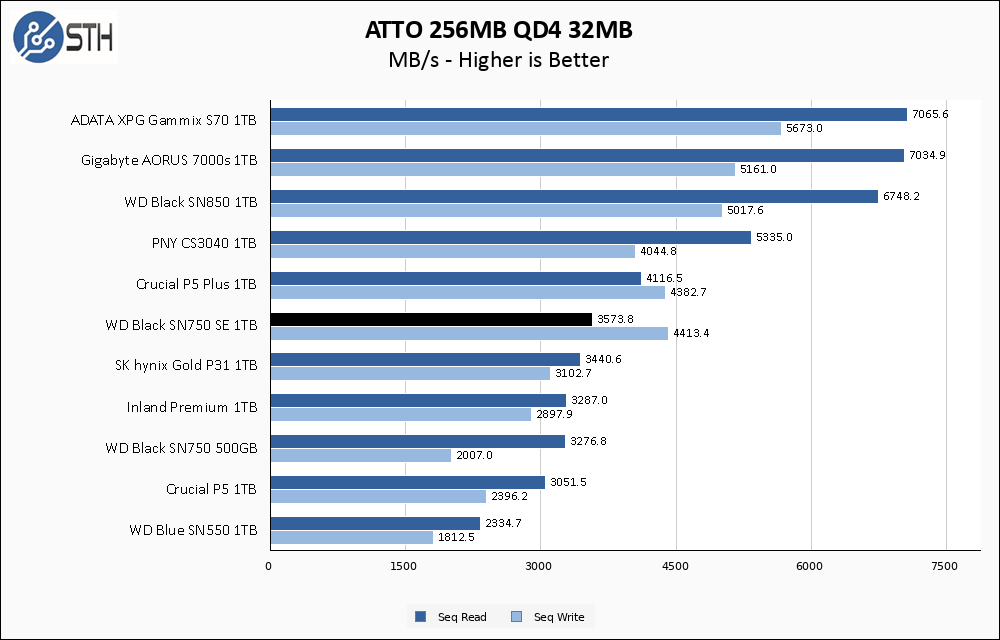
So, I do not believe these results at all. We have seen anomalous results on drives equipped with the Phison PS5013-E13 controller, and it appears the PS5019-E19 may exhibit something similar. The read performance result may be legitimate, but the write performance should not be trusted.
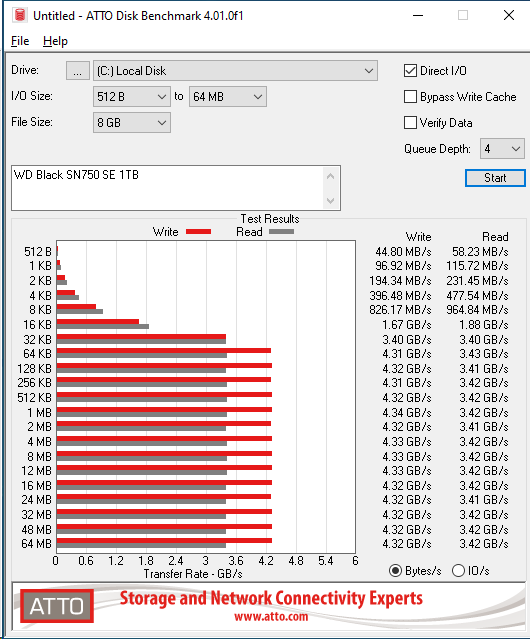
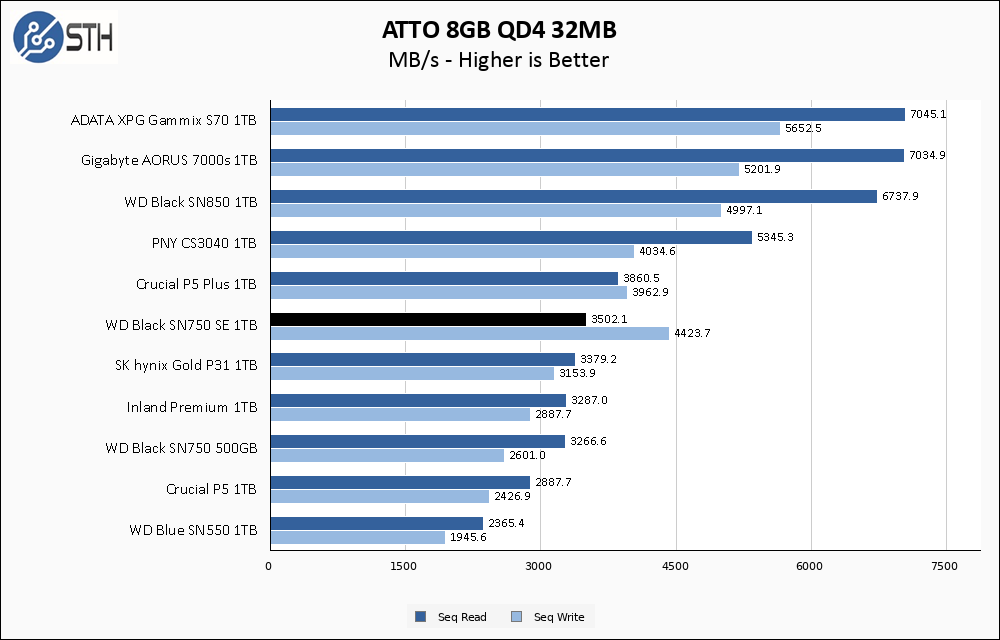
We have seen anomalous results on drives equipped with the Phison PS5013-E13 controller, and it appears the PS5019-E19 may exhibit something similar. The read performance result may be legitimate, but the write performance should not be trusted.
Anvil’s Storage Utilities
Anvil’s Storage Utilities is a comprehensive benchmark that gives us a very in-depth look at the performance of drives tested. This benchmark was run with both a 1GB and 8GB test size.
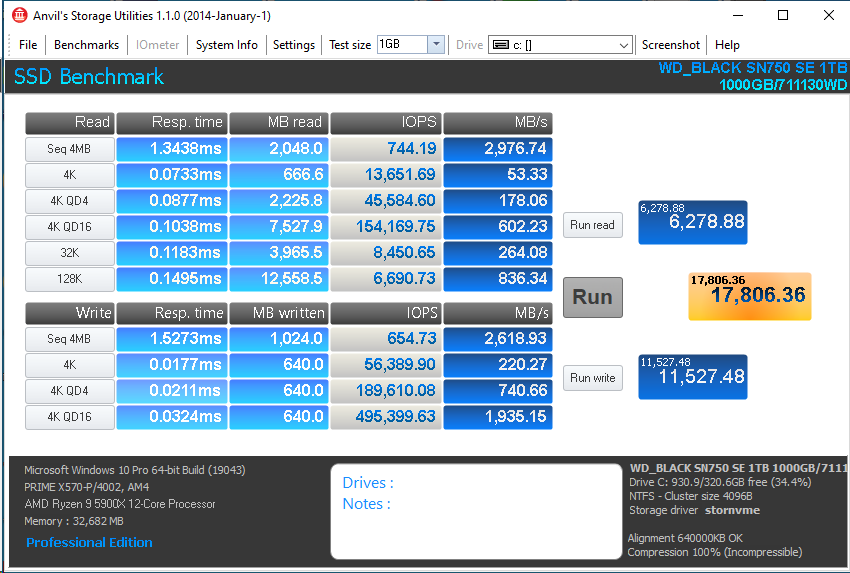
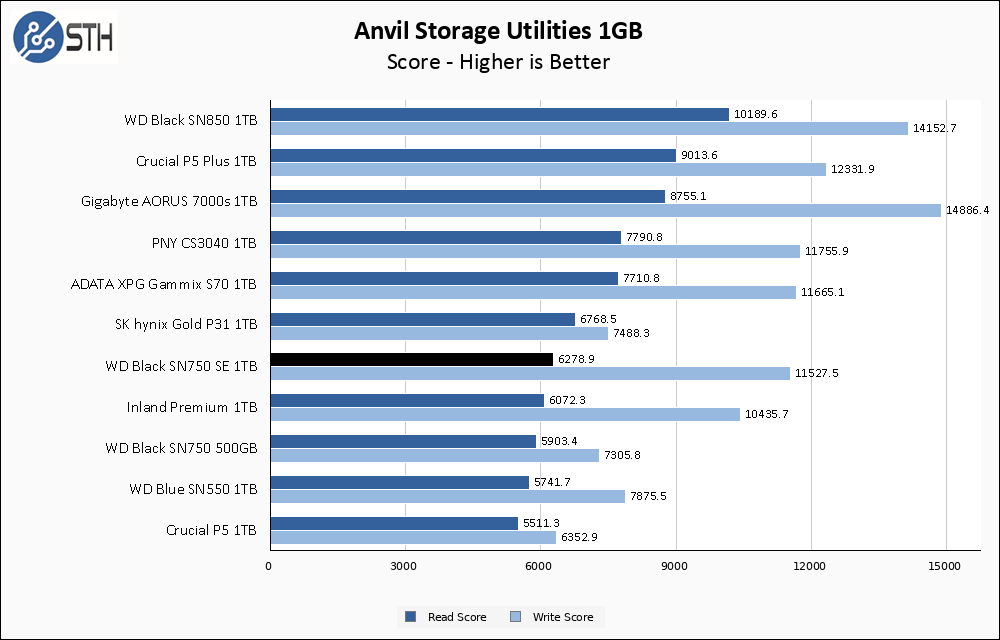
Anvil shows the WD Black SN750 SE sitting nearly at the top of the PCIe 3.0 pack, which would be great if it was a 3.0 drive. Write score gets a typical Phison-in-Anvil bump and is competitive with other 4.0 drives in overall score.
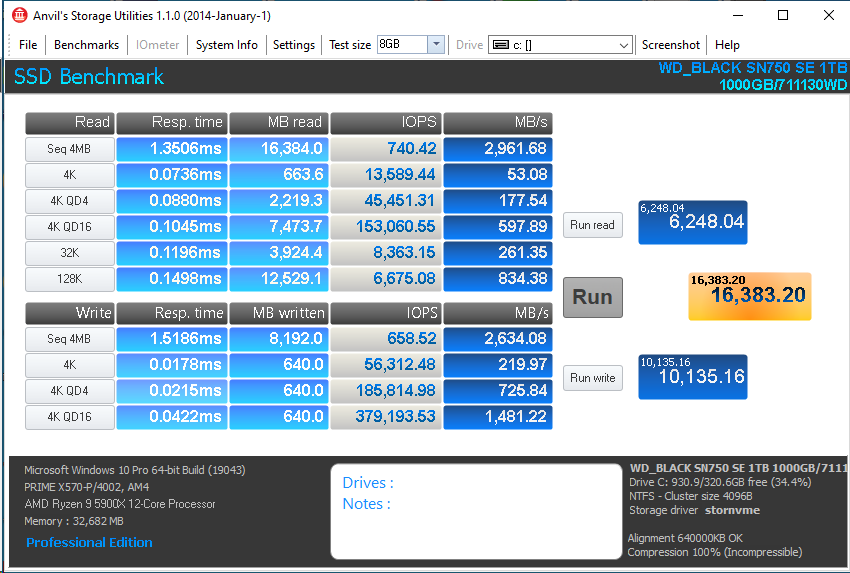
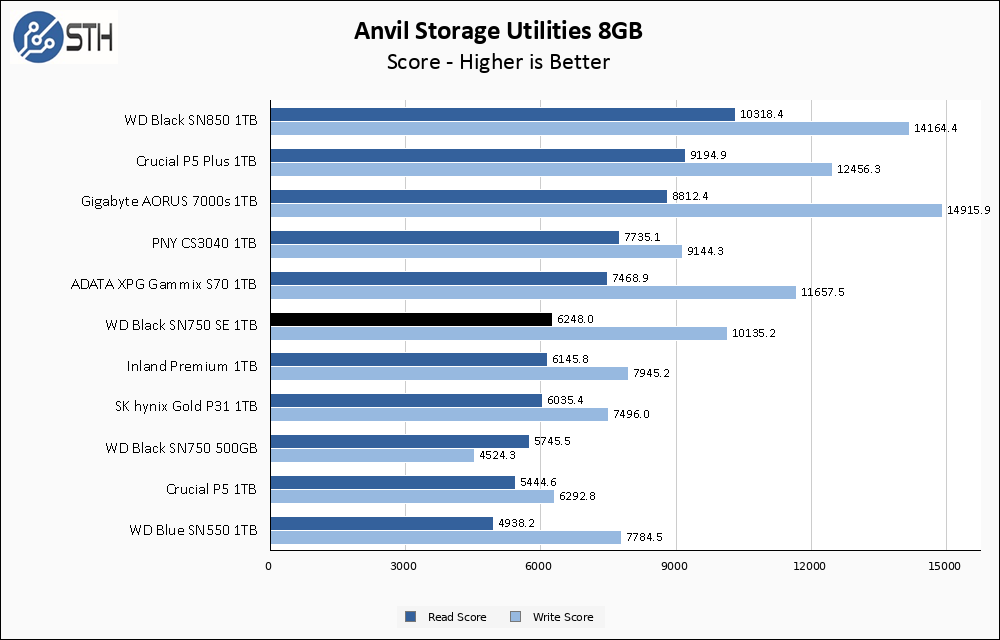
Strong performance in the larger Anvil test lets the WD Black SN750 SE crown itself king among PCIe 3.0 drives, as long as you forget that it is a 4.0 drive.
AS SSD Benchmark
AS SSD Benchmark is another good benchmark for testing SSDs. We run all three tests for our series. Like other utilities, it was run with both the default 1GB as well as a larger 10GB test set.
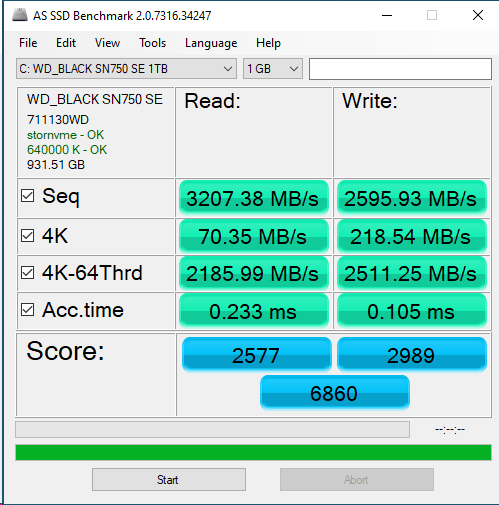
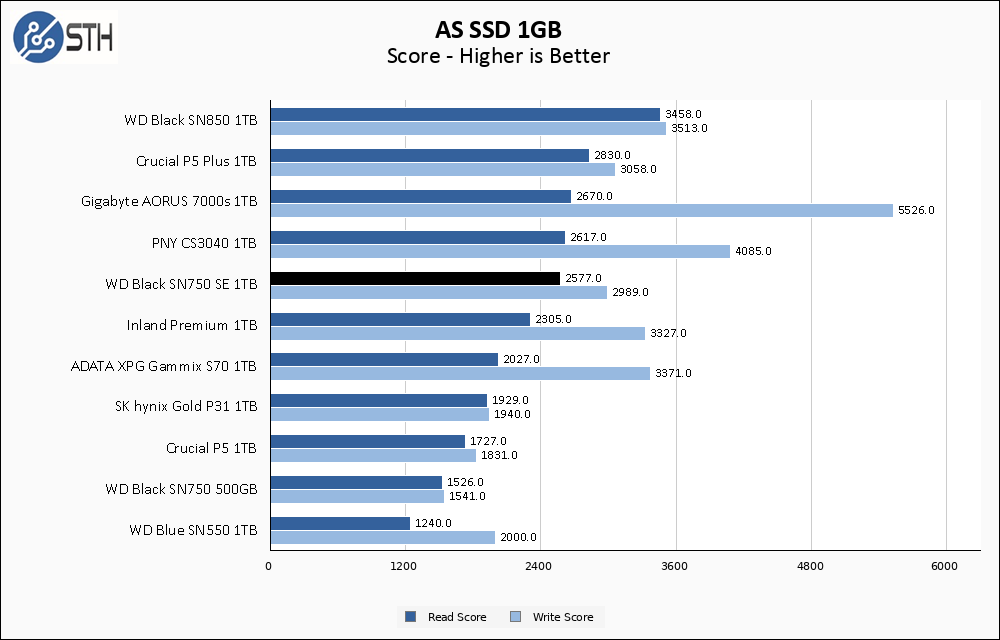
AS SSD gives the WD Black SN750 SE its best result yet, nudging its way slightly ahead of the XPG GAMMIX S70.
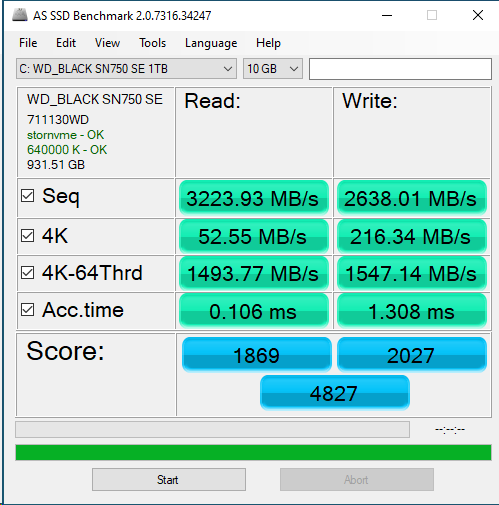
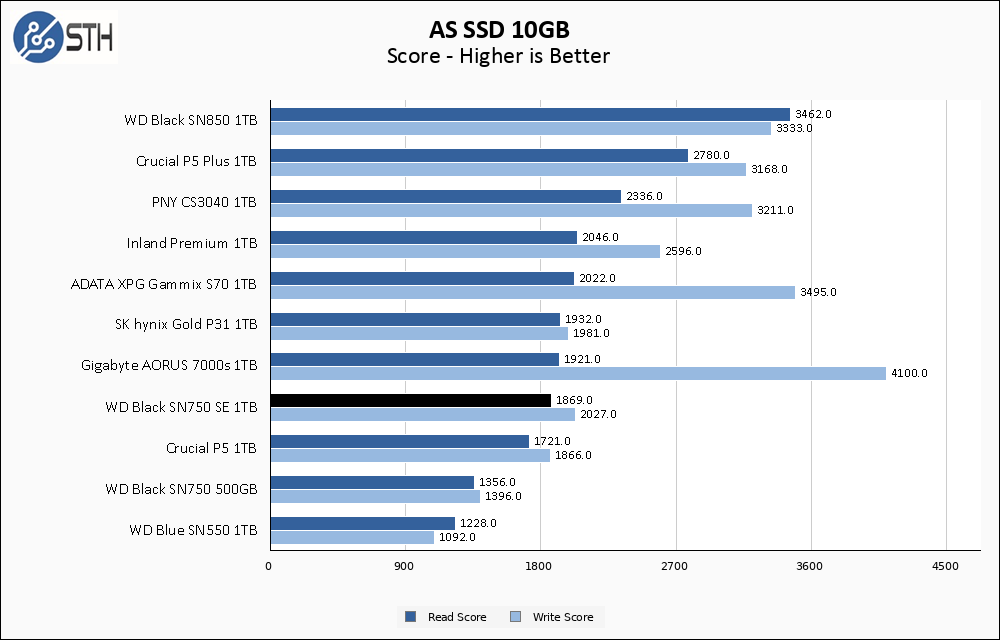
The larger AS SSD test is a different story; the WD Black SN750 SE can only fend off the lower end PCIe 3.0 drives. Everything high end or PCIe 4.0 leaves it in the dust.
SPECworkstation, thermals, and our conclusion are up next.




I’m thinking less “marketing gimmick” and more “want to meet the minimum requirements for a PS5”, as they require Gen4 drives.
aetherspoon,
PCIe 4.0 compatibility is not all that is ‘required’ to be PS5 compatible. By Sony’s documentation drives must also be capable of 5500 MB/s sequential read rates, which this drive does not approach. Gimmick.
The only reason PCIe 4.0 would be useful for this drive is if you had a PCIe 4.0 M.2 x2 slot, but I don’t know of any PCIe 4.0 system that has only M.2 x2 and not x4.
I had the same thought Chris, and the 2nd slot on the ASUS Pro WS X570-ACE (my motherboard) is a PCIe 4×2 slot that I use for my OS drive (and keep the CPU connected top slot @ PCIe 4×4 for my high performance drive).
@Chris S:
The Supermicro H12SSW series comes to mind, although it does not apply to all variants. I don’t know how many customers will place a consumer SSD on such a board, but do care about the better performance of gen4 and pay the premium…
@Chris S : The XSS expansion cards are PCIE4x2. I remember someone making an adapter- this drive along with the adapter should be a cheaper option than the official cards.
Like the commenter above, I also have a ASUS X570-ACE with a second m.2 PCIe 4.0 x2 slot that is connected to the PCH. Doesn’t really make sense to use a top of the line PCIe 3.0 drive (because it can never use all 4 lanes), and doesn’t really make sense to use a top of the line PCIe 4.0 drive either. This fits the niche perfectly.
I’m also buying a Dell workstation that has a PCIe 4.0 x4 m.2 slot connected through the PCH, where there won’t be enough bandwidth for a full x4 drive.
So there is a niche this fits.
Will, thanks for this article. I had not noticed the addition of “SE” to the online listings for WD 750’s… and I am in the market for a new SSD. Had I not seen this report I probably would have blithely bought what I thought was a WD 750.
Effectively this move raises the price for decent perf from WD. I am not seeing “750” for sale anyore just “750SE”. CA135 750SE, CA225 850, 1TB. Nothing in between.
I still bought this anyway for my TUF F15 gaming (2022) because it is slightly better than the pre-installed intel one, and because only a handful of games will actually benifit in load times if I got soemthing fancier honestly.